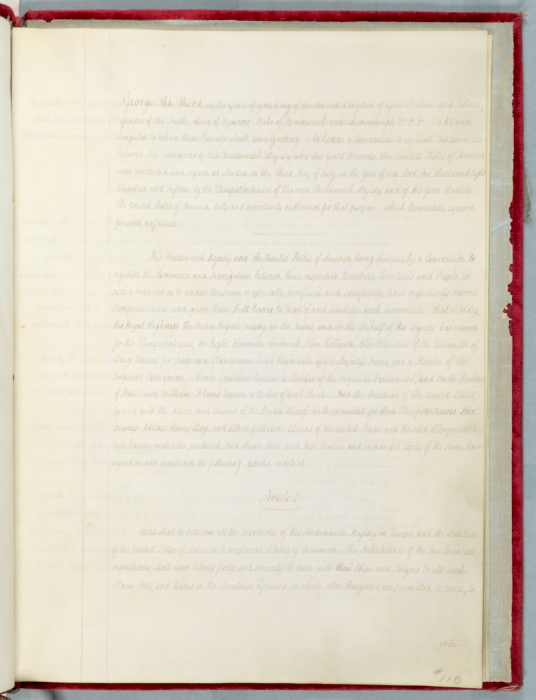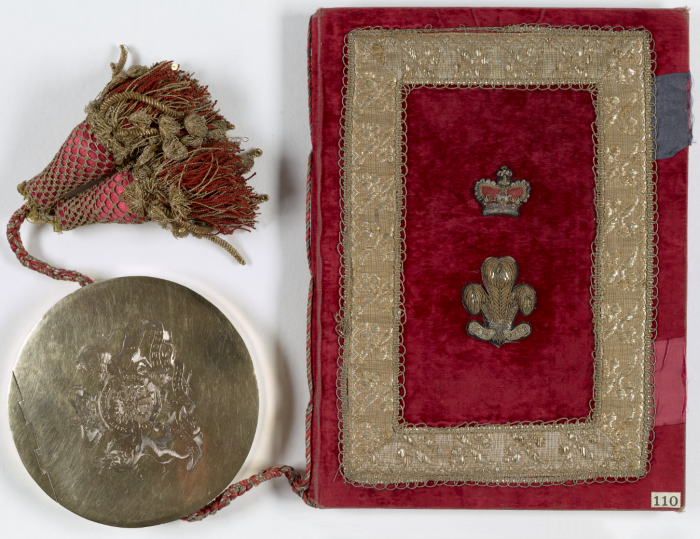25th November 2015
The start of a beautiful friendship
You’ve probably heard of the War of 1812, but do you know about the Treaty of Commerce and Navigation of July 3, 1815, or ‘A Convention to Regulate the Commerce between the Territories of the United States and of His Britannick Majesty?’ Probably not, especially since the name is so tricky to remember. However, it was this treaty which not only marked the end of the War of 1812, but set the terms of a lasting peace. In the decades that followed, that military and economic peace, would accelerate the rise of what would one day become known as ‘the special relationship.’
Beneath the legalistic veneer of the Treaty lies a history that stretched back several decades to the American War of Independence. Article One bestowed “a reciprocal liberty of Commerce” between British and American citizens that struck down decades of commercial restrictions. After the American Revolution, Great Britain and the US used dueling commercial restrictions to contest each others’ diplomatic strategies. But the Treaty now turned the page.
In an epoch before the income tax, nations like the US and Great Britain relied on customs duties for national revenue. Article Two acknowledged the right of both nations to collect customs duties on each other’s trade, but required parity in how the taxes were calculated and collected. This brought an end to a long tradition of both nations punishing each other through discriminatory customs duties.

The Treaty also specified that American commerce “shall be admitted and hospitably received” in India and Scotland while setting forth specific terms of trade for Americans in colonial ports. In order to encourage American voyages to colonial ports in India and China, the Treaty gave American ships the right “to touch for refreshment” in British holdings in the African and Indian sea, such as the Cape of Good Hope or St. Helena. Article Three took down barriers that the British government had long relied on to prevent Americans from profiting from imperial trade. For Americans, this would mean new opportunities to expand already robust trade with Chinese and Indian markets. For Great Britain, the new policy signaled the end of the aged practices of mercantilism and, likewise, the emergence of a new free trade sensibility.
Article Four allowed each country to appoint “Consuls for the protection of Trade to reside” in the other’s territory. Between 1793 and 1815, trade controversies between both governments, had filled the dockets of British admiralty courts and American federal courts. The Consuls would offer an alternative means of dispute resolution. However, the Consuls turned out to be the least important part of the Treaty because the terms of trade between the two nations had become so much friendlier than in the past.
The final Article made the agreement binding on both nations. Below the stipulation appears the seal and signature of the convention delegates: John Quincy Adams, Henry Clay, and Albert Gallatin from the United States, and Frederick John Robinson, Henry Goulburn, and William Adams from Great Britain. The stature of the signatories suggests the importance that both nations placed in settling old differences: Robinson would come to be known as The Viscount Goderich and served as Prime Minister of the United Kingdom; Goulburn would twice serve as Chancellor of the Exchequer; Gallatin had been Secretary of the Treasury under Presidents Jefferson and Madison; Quincy Adams would be the sixth President of the United States; Clay would be the chief power broker in the American Congress for many a year.
By inviting American trade within the British system, it confirmed that Great Britain saw the US no longer as a disruptive force against its own ambitions, but rather a partner in trade. For its part, the US approval of the Treaty confirmed that American commerce would work within an economic marketplace at the center of which stood London.
It was the beginning of a profound alliance, which continues today as one of the strongest bilateral relationships the world has ever known.
The copy of the Treaty photographed here is in the holdings of the U.S. National Archives and published here with their kind permission.


Congratulations Gautham Rao, incredible research,wish you all the best in every future
endeavor
Congratulations Dr Gautham Rao,incredible research, must have been a lot of hard work Kudos and all the best in very future endeavor
Very well written, Gauth.